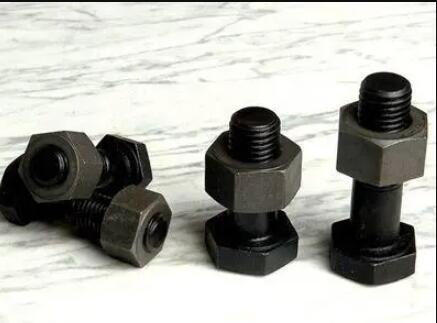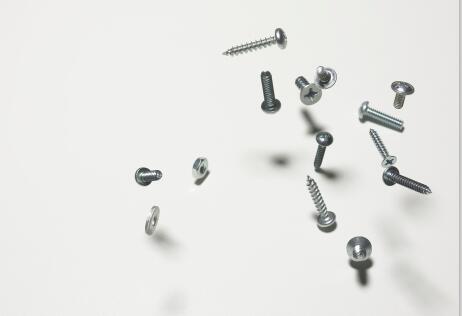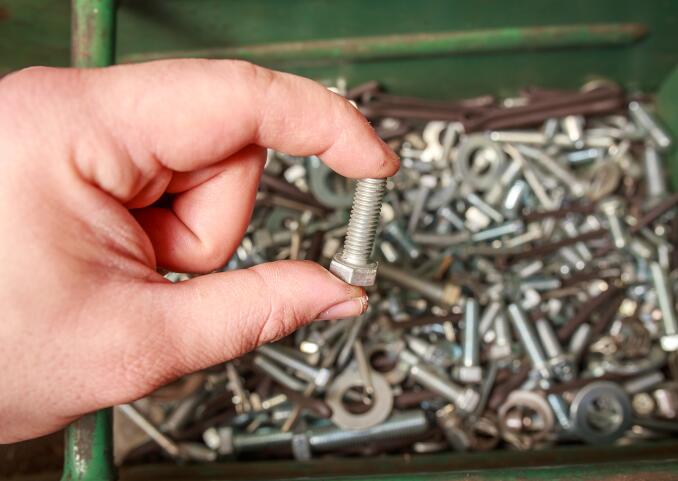Prince Fastener:How To Check The Quality Of Fasteners?
1. What is a fastener?
Fasteners are a general term for a type of mechanical parts used to fasten two or more parts (or components) into a whole. Also known as fastener standard parts in the market.
2. It usually includes the following 12 types of parts:
Bolts, Studs, Screws, Nuts, Tapping Screws, Wood Screws, Washers, Retaining Rings, Pins, Rivets, Assemblies and Connections, Welding Studs.

In order to enable fasteners to be used with better performance, we conduct four major tests on the special quality of fasteners.
1. Hardness and strength
In the detection of threaded fasteners, it is not simple to check the relevant manuals according to the hardness value and convert them into strength values. There is a hardenability factor in the middle. Because the national standard GB3098.1 and the national standard GB3098.3 stipulate that the arbitration hardness is measured at 1/2 radius of the cross section of the part. Tensile specimens are also taken from 1/2 radius.
Because it is not excluded that there are low hardness and low strength parts in the central part of the part. In general, the hardenability of the material is good, and the hardness of the cross section of the screw can be evenly distributed. As long as the hardness is qualified, the strength and guaranteed stress can also meet the requirements. However, when the hardenability of the material is poor, although the hardness is qualified according to the specified parts, the strength and guaranteed stress often fail to meet the requirements.
Especially when the surface hardness tends to the lower limit. In order to control the strength and guaranteed stress within the qualified range, the lower limit of hardness is often increased. For example, the hardness control range of grade 8.8: 26~31HRC for specifications below M16, 28~34HRC for specifications above M16; 36~39HRC for grade 10.9 is appropriate. Level 10.9 and above is another matter.
2. Decarburization and carburization
In the production process of mass heat treatment, metallographic method or microhardness method can only be checked regularly. Because of its long inspection time and high cost. In order to judge the carbon control situation of the furnace in time, spark test and Rockwell hardness test can be used to make a preliminary judgment on decarburization and carburization.

Spark detection is to lightly grind the quenched parts on the grinding machine from the surface to the inside to determine whether the carbon content of the surface layer and the core is the same. Of course, this requires the operator to have skilled skills and spark discrimination. Rockwell hardness testing is performed on one side of the hex bolt.
First, lightly sand one hexagonal flat surface of the quenched part with sandpaper to measure the first Rockwell hardness. Then grind the surface to about 0.5mm on the grinder, and measure the Rockwell hardness again. If the two hardness values are basically the same, it means neither decarburization nor carburization.
When the former hardness is lower than the latter hardness, it indicates that the surface is decarburized. When the former hardness is higher than the latter, it indicates that the surface is carburized. In general, when the difference between the two hardnesses is within 5HRC, the decarburization or carburization of the parts is basically within the qualified range when inspected by metallographic method or microhardness method.
3. Inspection of hydrogen embrittlement
The susceptibility to hydrogen embrittlement increases with the strength of the fastener. For grade 10.9 and above externally threaded fasteners or case hardened self-tapping screws and combination screws with hardened steel washers, etc., should be dehydrogenated after electroplating.
The hydrogen removal treatment is generally carried out in an oven or a tempering furnace at 190~230 °C for more than 4 hours to diffuse out the hydrogen. Threaded fasteners can be tightened on a special fixture until the screw is subjected to a tensile force with a certain guaranteed stress, and kept for 48 hours. After loosening, the threaded fasteners will not break. This method is used as an inspection method for hydrogen embrittlement.
4. Re-tempering test
For bolts, screws and studs of grades 8.8 to 12.9, the re-tempering test shall be conducted at 10°C lower than the minimum tempering temperature in actual production for 30 minutes. On the same sample, the difference between the average values of hardness at three points before and after the test shall not exceed 20HV.
The re-tempering test can check the improper operation of tempering at too low temperature to barely reach the specified hardness range due to insufficient quenching hardness, so as to ensure the comprehensive mechanical properties of the parts. Especially threaded fasteners made of low carbon martensitic steel are tempered at low temperature.
Although other mechanical properties can meet the requirements, when measuring the guaranteed stress, the residual elongation fluctuates greatly, far greater than 12.5um. And under certain conditions of use, sudden breakage will occur. In some automotive and construction bolts, there have been sudden fractures. When the lowest tempering temperature is used for tempering, the above phenomenon can be reduced. However, special care should be taken when making grade 10.9 bolts from low carbon martensitic steels.

5.General requirements for fasteners
1) The surface of the fastener has a complete surface and no burrs on the edges and corners. Generally, it is not required to remove the small burrs of the process. The small burrs on the bearing surface of the bolt are not higher than the washer surface, and it is not allowed to exceed the bearing surface.
2) The surface of the fastener is not allowed to rust, and there are obvious defects such as scars, cracks, hair lines, and falling edges.
3) The fasteners without any surface treatment have a thin layer of oil, and the appearance surface is not allowed to have yellow rust spots.
4) The metric system of mechanical properties is carried out according to ISO 898/1, and the American system is carried out according to the corresponding standards of ASTM and SAE.
5) The geometric dimensions of the fasteners meet the standard requirements. The thread accuracy is metric 6g, US 2A.
6) Surface defects of external thread fasteners below grade 10.9 shall be implemented in accordance with GB/T 5267.1 (ISO 6759.1) “Surface Defect Standard”.
7) Surface defects of level 12.9 external thread fasteners shall be implemented in accordance with GB/T 5267.3 (ISO 6759.3) “Surface Defect Standards”.
6. Dimensional tolerance items and test methods of fasteners
illustrate:
1. The appendix of ISO 4759 “Fastener Tolerances” contains the test method standards for dimensional and geometric accuracy;
2. my country’s machinery industry standards have issued JB/T 9151.1 ~ JB/T
9151.7—1999 “Test methods for fasteners, dimensional and geometric accuracy” series of standards; (but geometric tolerances are no longer applicable)
3. The standard issued by this ministry adopts the Japanese JIS B1071-1985 “Test Method for Dimensional and Geometric Accuracy of Threaded Fasteners”.
The current JIS B1071-2010 version (the current version of the standard is more applicable to the rules of ISO 4759-11:2000).
4. The test method standards of the United States are all in the corresponding standards.